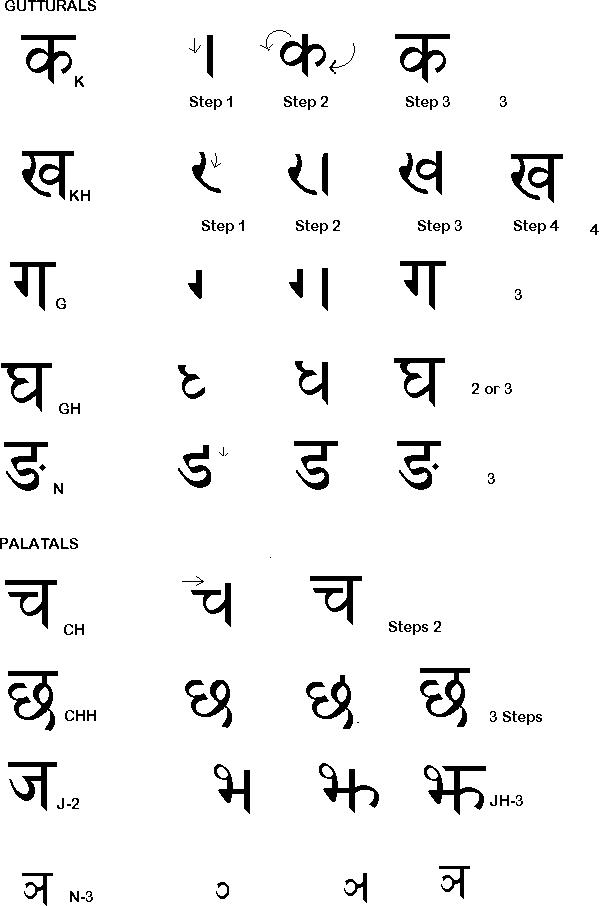
How to write Hindi letters
A step means you take the pen off the paper. Most Hindi letters can be written in 2 or 3 steps. The last step is the drawing of the horizontal line at the top. Experienced Hindi writers can reduce them further by for example retracing their pen back up a vertical stem.
This and the next lesson cover almost all the compound letters , vowels etc. so we can familiarlise ourselves with all the letters and are able to read them when we scan in a few stories from publications.Some of the steps in writing certain letters are left for you to do as excercise. Note the faint arrow line , the tail of the arrow gives you the direction from which the pen starts.The next figure contains the first two lines of the alphabet . The first five letters are the Gutturals all produced from the back of the throat and the next five from CH onwards - the palatals-so called because the tongue strikes the hard palate.
Note that a very few Hindi letters can be written in more than one way . JH and A and AA are the best examples. Compare JH with that in lesson 13
Next come the cerbrals because the tongue points up to the head , the dentals where the tongue strikes the upper teeth and the labials where the lips are closed. It is worth getting a pen and writing each on a piece of paper as you read through the next figure.
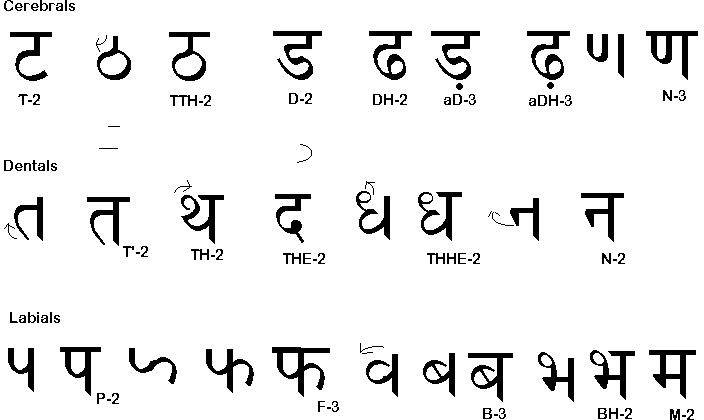
Now follow the semi vowels , the sibliants or s sound and finally H the aspirant.
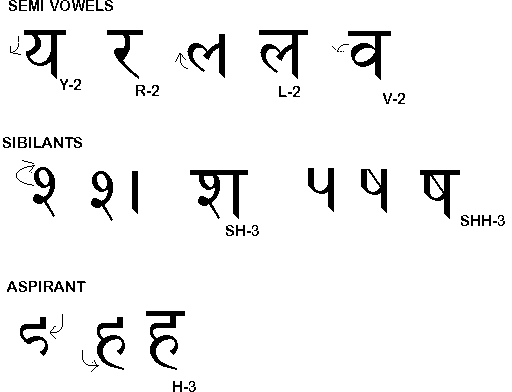
We will expand lesson 18 next week. In the meantime have a go at lesson 18 and 19 again.
Here is how the vowels are written . Ugh is formed in three steps. AA in four by adding an aa mark to ugh.
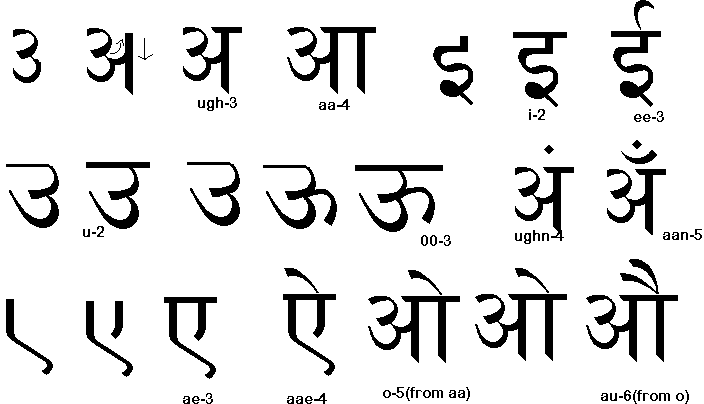
Aan of course if formed from Ugh etc.
In the top part of the figure below are the vowel marks. Note little i is actually added after the letter eg M is written down first as in the English word miss below; when it appears before the letter M.
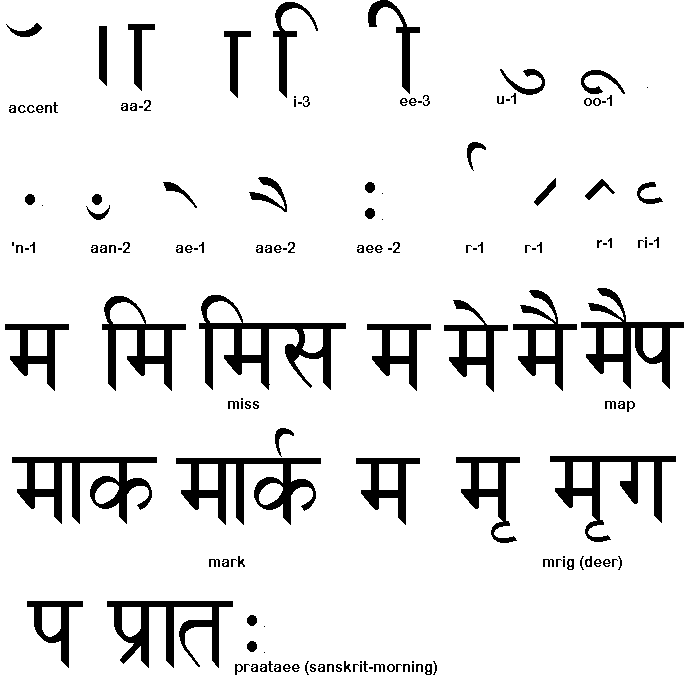
.Note the mark for r which follow the letter in the word Prate and the ri which modifies M in Mrig . But that the top r modifies the previous letter eg. in the word Mark where it modifies the preceding letter M even though it put over the K. Finally note the two vertical dots which give an ae sound and mostly used in Sanskrit words eg in the word Prataee as above built up from P then adding a r mark in the foot of the P etc. Prate Kal in Sanskrit means morning.
Next we look at compound letters. There are about 10 of these although only KSH , TR ,GY, SHR , and Ri are considered as part of the alphabet . These are written by starting with the vertical line first. We will add more in the coming week so that scanned articles can be read.
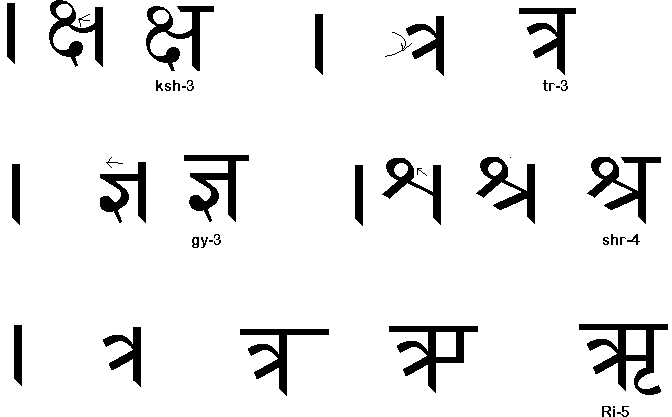
The next figure has Z , N , Ru , ROO, Hy, Hm, LRi, and the symbol for peace OM
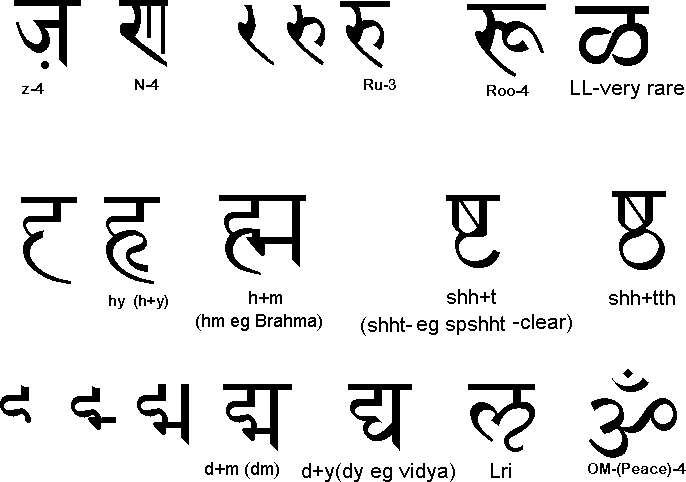
The following figure contains some interesting letters. On the top line are the guttural form of N combined with K , and also next to it g.
Sometimes ugh and AA are written as in this figure. Again it is important to know these so that one may not be surprised when reading a magazine.
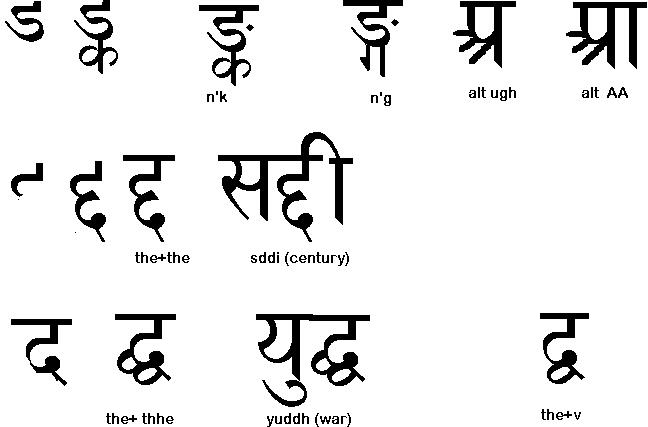
THE can also be combined with a couple of letters . One of them as in the figure above gives the word for war -yudh.
Lets have a look in this rather long lesson at some doubled letters. These below are the common and a couple of examples are given.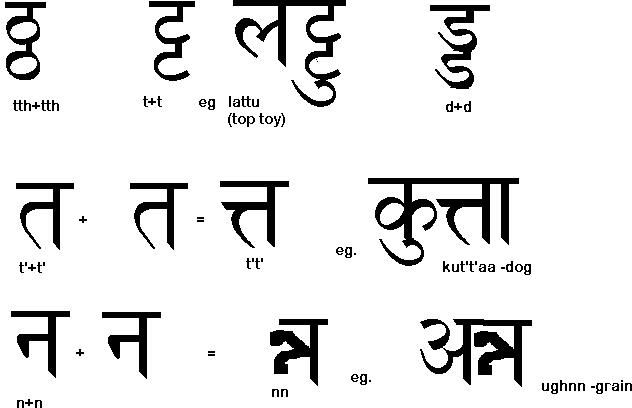
Finally lets check we remember all the half letters. Although this lesson may seem difficult you have met nearly all the letters before.Some like the t and d's are just smaller version of the full letter while jh and r do not seem to have any half letter form
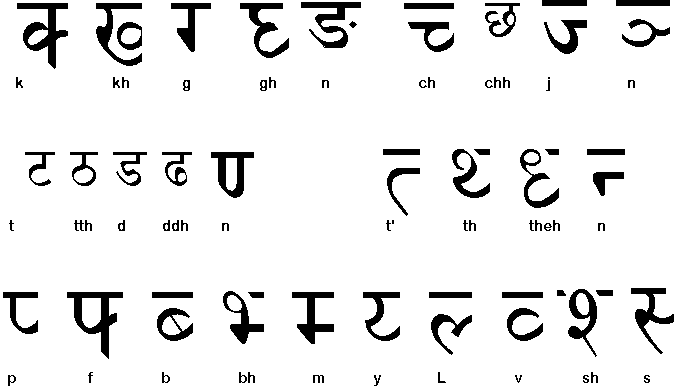
Hindi Lesson 19.....Home